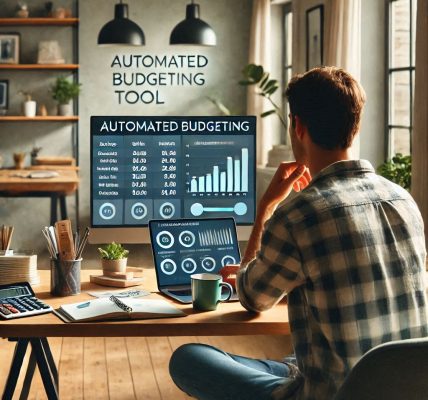In today’s fast-paced world, managing your finances manually can be overwhelming. Automating your budget is a powerful strategy that not only saves time but also ensures consistent investment growth. With the right approach, you can systematically allocate funds toward your investment goals without the stress of manual tracking. In this comprehensive guide, you will learn how to automate your budget effectively while maintaining legal compliance and optimizing your financial future.
Why Automating Your Budget is Crucial for Investment Growth
Automation brings discipline and consistency to your financial strategy. Here are some key benefits of automating your budget:
- Consistency: Regular, automated contributions ensure steady investment growth over time.
- Time-Saving: Eliminates the need to manually track and transfer funds.
- Reduced Human Error: Prevents missed payments and ensures timely investments.
- Better Financial Discipline: Helps you stick to your financial plan without emotional decision-making.
- Compounding Effect: Regular investments maximize the power of compound interest.
Step 1: Evaluate Your Financial Goals and Budget
Before automating, it is essential to understand your financial goals and overall budget. Follow these steps to get started:
- Identify Your Investment Objectives:
- Short-Term (1-3 years): Emergency fund, vacation, small purchases.
- Medium-Term (3-10 years): Buying a house, education, business funding.
- Long-Term (10+ years): Retirement, wealth accumulation, legacy planning.
- Assess Your Income and Expenses:
- Calculate your total monthly income (salary, bonuses, passive income).
- List fixed expenses (rent, mortgage, insurance, utilities).
- Identify variable expenses (entertainment, dining, shopping).
- Define Your Investment Contribution:
- Allocate a fixed percentage of your income for investments (e.g., 20% to retirement funds).
- Prioritize high-interest debt repayment before increasing investments.
Step 2: Choose the Right Automation Tools
Using the right tools simplifies the budgeting process. Consider the following options:
- Bank Automation:
- Set up recurring transfers from your checking account to savings or investment accounts.
- Automate bill payments to avoid penalties and late fees.
- Investment Platforms:
- Utilize robo-advisors to automate portfolio management.
- Schedule automatic contributions to tax-advantaged accounts (e.g., 401(k), IRA).
- Budgeting Apps:
- Use apps like YNAB, Mint, or Personal Capital to track expenses and automate savings.
Step 3: Automate Key Budget Categories
- Emergency Fund:
- Automate small monthly contributions until you reach 3-6 months of living expenses.
- Retirement Contributions:
- Maximize employer-sponsored plans like 401(k) through direct payroll deductions.
- Automate regular IRA contributions to benefit from compounding growth.
- Investment Accounts:
- Set recurring investments into diversified portfolios (mutual funds, ETFs).
- Use dollar-cost averaging to reduce market volatility risks.
- Debt Repayment:
- Automate payments toward high-interest debt to save on long-term interest.
Step 4: Implement the Pay-Yourself-First Strategy
This strategy prioritizes saving and investing before discretionary spending. Here’s how to execute it effectively:
- Schedule automatic transfers to savings and investment accounts on payday.
- Treat your investment contributions as a non-negotiable expense.
- Gradually increase your contribution rate as your income grows.
Step 5: Optimize Your Automation for Tax Efficiency
- Maximize Tax-Advantaged Accounts:
- Contribute to tax-advantaged plans (401(k), IRA, HSA) for tax savings.
- Take Advantage of Employer Matching:
- Ensure you contribute enough to receive the full employer match.
- Plan for Tax Season:
- Automate estimated tax payments if you’re self-employed.
Step 6: Regularly Review and Adjust Your Automation
Automated systems should not be set and forgotten. Regular reviews ensure alignment with your evolving financial goals:
- Quarterly Reviews:
- Assess whether your automated contributions align with your objectives.
- Annual Checkups:
- Increase your investment rate when you receive raises or bonuses.
- Life Changes:
- Adjust automation settings during major life events (marriage, children, home purchase).
Step 7: Stay Legally Compliant
Compliance is crucial when automating your budget. Consider these legal safeguards:
- Understand Contribution Limits:
- Stay within annual contribution limits for retirement and tax-advantaged accounts.
- Document Transactions:
- Maintain records of automated transfers for tax reporting and audits.
- Consult Financial Advisors:
- Seek professional guidance for complex financial scenarios and legal compliance.
Common Mistakes to Avoid When Automating Your Budget
- Over-Automating:
- Avoid automating every expense without monitoring cash flow.
- Ignoring Reviews:
- Failure to review automation leads to outdated allocations.
- Underfunding Emergency Reserves:
- Always maintain a buffer for unexpected expenses.
- Neglecting Tax Implications:
- Ensure automated systems align with current tax regulations.
Conclusion
Automating your budget is a powerful way to ensure consistent investment growth while minimizing human error and maximizing efficiency. By setting clear goals, leveraging modern tools, and regularly reviewing your system, you can take control of your financial future effortlessly.
Stay informed, remain compliant, and adapt to life changes to maintain long-term financial success. With the right automation strategies, you can seamlessly grow your investments and achieve lasting financial freedom.



